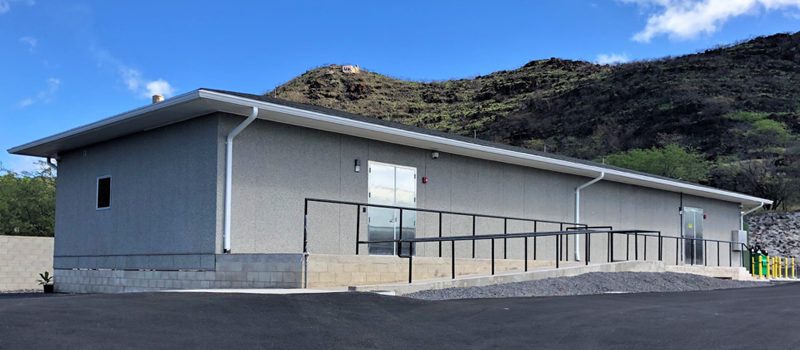
 Amy Marks
Amy Marks
CEO
XSite Modular
If you follow the subsea cable sector, you’ve likely heard about Arctic Connect, the new cable that will link Europe to Japan and China across the Arctic Ocean. Currently, most data traffic between Asia and Europe is carried by subsea cables traversing the Suez Canal. A trans-Arctic submarine cable will reduce the distance between Asia and Europe by approximately 40 percent, and the shorter the physical cable distance, the lower the latency. This is especially important to financial institutions and trading firms that want the shortest possible delays on millisecond transactions between London and Tokyo.
A private project backed by Finland-based Cinia and Russia’s MegaFon with support from their home governments, the 10,000 kilometer Arctic Connect represents a landmark development on a number of levels. For one, while the first phase will see the undersea cable stretching from Helsinki, Finland to Sapporo, Japan before continuing on to China, the scope of the project may well become even wider. There is talk of the possibility of extending Arctic Connect to a three- continent system, connecting North America to Asia as well as Europe, meaning it will cover approximately 85 percent of the world’s population.
Another reason this subsea cable project is a breakthrough is that the Arctic Ocean, along with the Southern Ocean in the Antarctic, is one of the last remaining oceans on the planet whose seabed has yet to be traversed by fiber-optic cable. Branches of the Arctic Connect trunk route will also provide high-speed Internet access to a number of Arctic Circle communities that have never known such connectivity. Lastly, were it not for changes in the Arctic environment, specifically, reduced sea ice in the Arctic Ocean caused by rising temperatures, this and other proposed High North cable routes would not even be possible.
But whether at landing points on the Bering Strait where frosts can last for 80 days and snow is common even in summer, or on the coast of Japan, which is vulnerable to seismic disturbances and typhoons, the Arctic Connect subsea cable will face challenging environmental conditions so diverse as to be unprecedented. For this reason, the resiliency of its Cable Landing Stations (CLSs), which are critical infrastructure in the system’s end-to-end service paths, is a requirement that cannot be overemphasized.
Not All MCLS Are Created Equal
As with all commercial and industrial developments in the Arctic, projected costs and timelines for subsea cable projects such as the Arctic Connect will be significantly greater than in other more temperate regions of the world. With respect to building the network’s CLSs, the use of traditional “stick-built” construction whereby various components are transported to a site and then put together into a final product at great cost, time, and labor would be a non-starter for the northernmost landing points. Not in a region where polar-class ice-breaking ships will either be retrofitted to carry cable-laying gear or enlisted to escort cable-laying ships.
Additionally, stick-built CLSs constructed in many countries often involve firms lacking adequate experience in the design-build of these highly specialized buildings. Along with Finland and Russia, the nations whose public or private entities will likely touch Arctic Connect include China, Japan, Norway, Sweden, and Germany. There are reports that the U.S. and Canada might be in the mix. The liability here is that with so many potential CLS design-builders creating one-off solutions without an in-depth knowledge of the complete use case and understanding of equipment layout and selection, there could arise not only variances in performance and operational costs, but especially given the current geopolitical climate, issues related to data security.
To reduce deployment timelines and ensure quality control, Modular Cable Landing Stations (MCLSs), which as the term suggests, make use of modular design-build methods and are built in a controlled environment by experienced labor, offer the advantage of integrating design flexibility to meet the specific technical requirements of a new subsea cable project. Modular design-build processes also ensure cost certainty from the earliest concept phases through completion. MCLSs offer the benefits of a Containerized Cable Landing Station (CCLS) solution but possess higher quality and durability than either traditional site-built CLSs or containers. That said, not all MCLSs are created equal; the most resilient are permanent steel and concrete buildings designed to a 50-year-plus lifespan.
An MCLS constructed with steel and concrete can withstand the worst extreme weather events, security threats, and failure scenarios, including arctic temperatures, heavy wind, and seismic disturbances. When Category 5 Super Typhoon Yutu struck the Pacific Islands last October with maximum gusts of up to 190 miles per hour, it was a hardened MCLS that not only remained standing, but continued operations throughout the duration of the event.
But whether commissioned for subsea cables in the Arctic, Asia, Africa, Europe, or North and South America, MCLSs provide critical services — among these, cooling, ventilation, AC backup power, fire detection and suppression, cable management, access control, video surveillance, a building management system, and others — that keep these networks up and running.
Moreover, as enterprise cloud adoption continues, streaming content reaches new shores, and next-generation technologies such as the IoT, Artificial Intelligence, and smart city applications become mainstream, we’ll see more and more intercontinental and regional cable builds. Hence, across every hemisphere, the need for these hardened and resilient MCLSs, as well as hybrid CLS/modular data centers, will become fundamental to our increasingly connected world.







